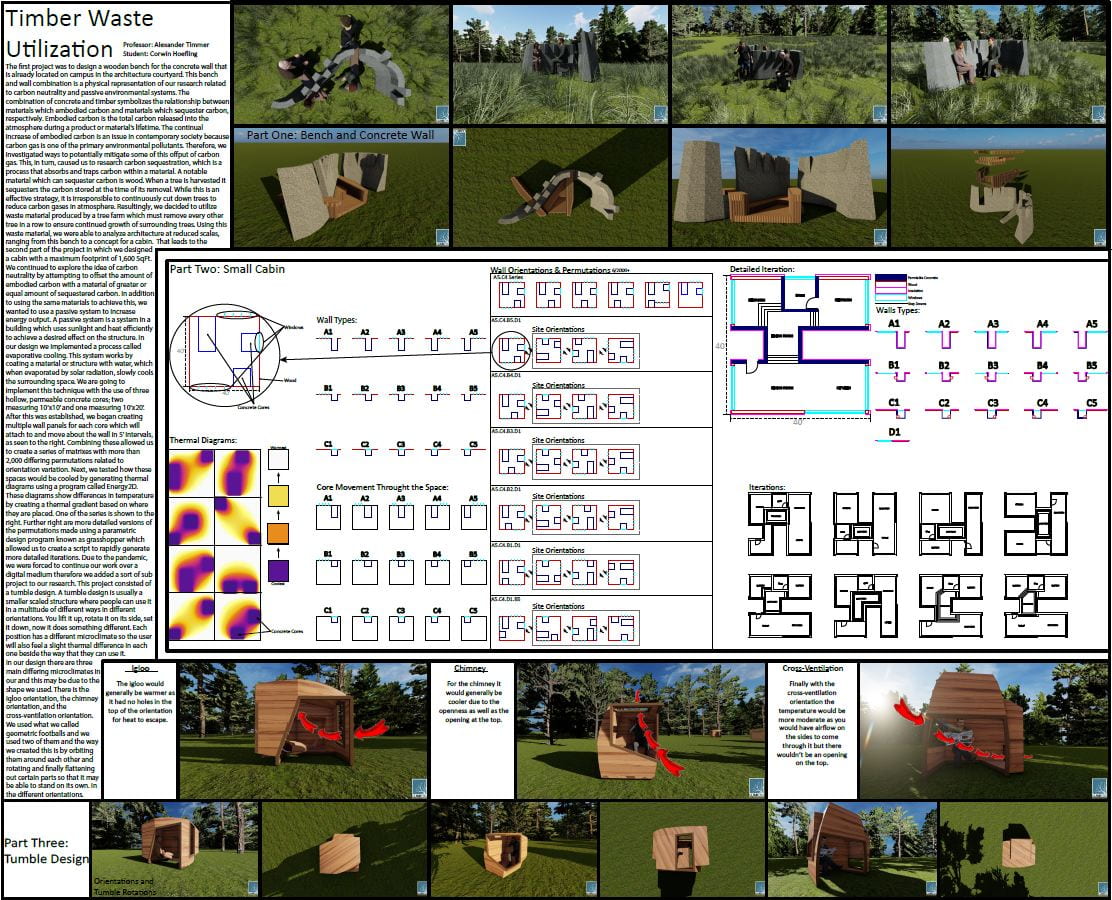Corwin Hoefling, “Timber Waste Utilization”
Mentor: Alexander Timmer, Architecture
We began this project by partnering with a local tree farm to design and build a structure which utilizes the thinning of the farm to allow the remaining trees to continue to grow. This process is also known as culling and most tree farms use this process almost every five years until the full-grown trees can be harvested. While it is considered a waste material because it is not economically viable at a commercial or industrial level, there is an opportunity to utilize it for smaller scale structures – be that a small cabin or a piece of furniture. Our primary goal was to design a structure for the farm that efficiently and effectively uses the culled material so that it does not go to waste. With this in mind we began to conceptualize multiple types of designs at various scales ranging from a 1600 square foot wooden cabin that uses passive systems to conserve energy and carbon outputs, to a tumble design that was made for one inhabitant to rest in a variety of microclimates and finally a bench which represents a zero net carbon goal we also had for this project. This theme of zero net carbon has been around since the beginning of the project as both the cabin and bench have been designed so that the amount of carbon sequestered offsets the amount of carbon produced by their respective concrete bases. When a tree is cut down, all of the carbon in the wood gets trapped inside and cannot escape out into the atmosphere. This is what is known as sequestration. Carbon sequestration is a good thing as it will slightly lower the carbon gases creating havoc with our climate and atmosphere.
Click the thumbnail below to open the full sized poster in a new tab.

Very I interesting topic; however, it was hard to follow. Maybe a little bit of more details on explaining. Though, the poster was a little cluster and hard to follow, it caught my attention. Thank you for your knowledge and raising awareness on this topic.
Very interesting topic; however, it was hard to follow. It need it more details, a video explaining the poster would help. Though the poster caught my attention, it was hard to follow. Thank you for the knowledge and raising the awareness.